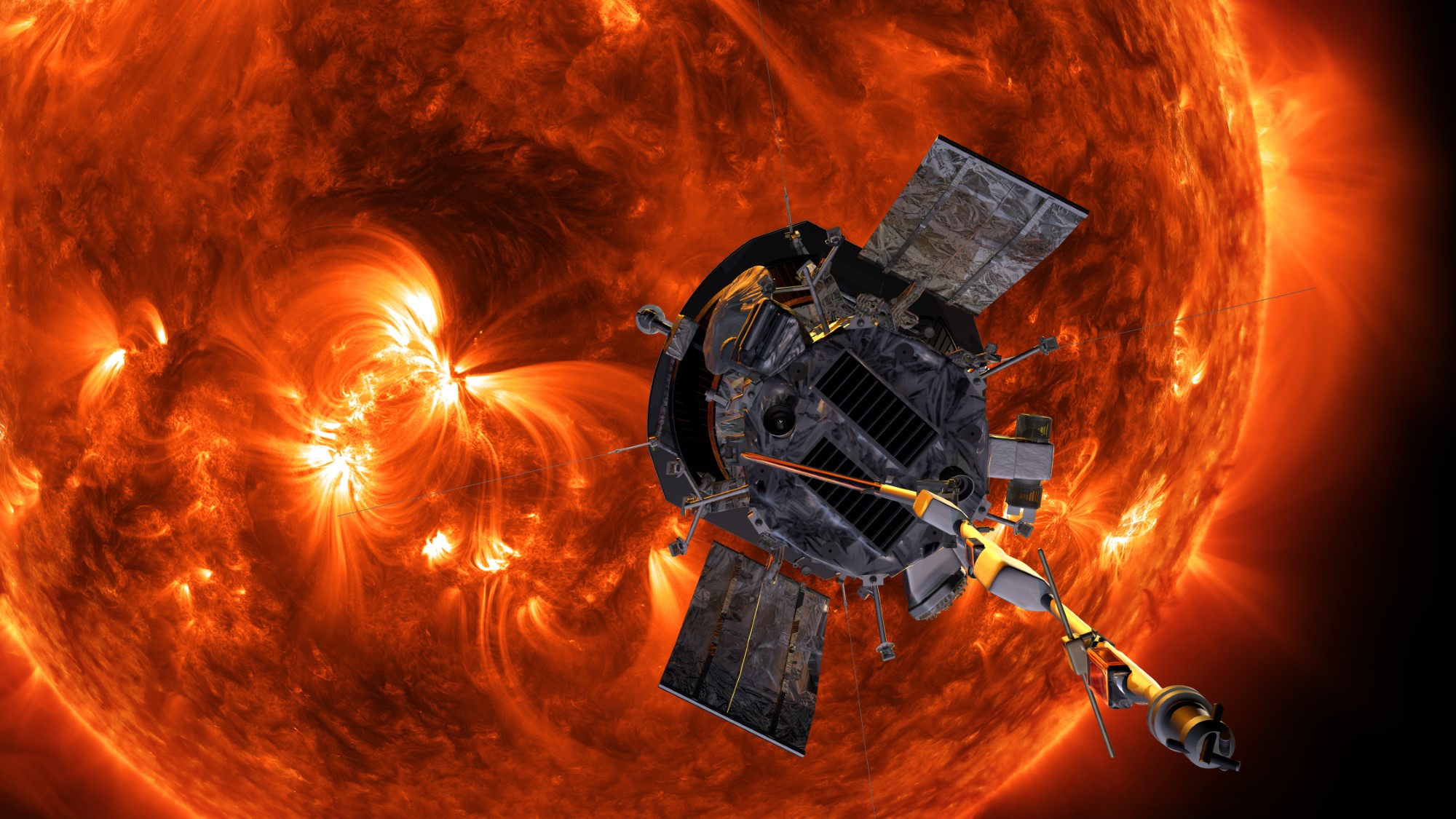3
On Dec. 24, 2024, NASA’s Parker Solar Probe traveled closer to the Sun than any spacecraft had before. During this close approach, or perihelion, the spacecraft’s four instruments observed the Sun’s atmosphere from inside. This week, NASA released images collected by the spacecraft’s Wide-Field Imager for Solar Probe (WISPR) instrument.
Since the close approach in late 2024, Parker Solar Probe has performed two more perihelia passes at the same distance on March 22 and June 19, the latter marking the 24th and final perihelion of the spacecraft’s primary mission. Throughout its nearly seven-year mission, the probe has helped scientists better understand the Sun and its solar wind. The latest images add to a wealth of information about our star.
“Parker Solar Probe has once again transported us into the dynamic atmosphere of our closest star,” said Nicky Fox, associate administrator for NASA’s Science Mission Directorate. “We are witnessing where space weather threats to Earth begin, with our eyes, not just with models. This new data will help us vastly improve our space weather predictions to ensure the safety of our astronauts and the protection of our technology here on Earth and throughout the solar system.”
The images show bursts of plasma release from the Sun in so-called coronal mass ejections (CME) at the start of their journey through space. When these streams of charged particles reach Earth they drive space weather, which can potentially damage satellites, harm astronauts, or interrupt communications systems. Additionally, the particles are responsible for the auroras when they interact with the upper atmosphere after being trapped in Earth’s magnetic field.
(Video: CMEs observed by Parker Solar Probe’s WISPR instrument during perihelion 22 in December 2024. Credit: NASA/Johns Hopkins APL/Naval Research Lab)
“In these images, we’re seeing the CMEs basically piling up on top of one another,” said WISPR instrument scientist Angelos Vourlidas of the Johns Hopkins Applied Physics Laboratory, which designed, built, and operates the spacecraft. “We’re using this to figure out how the CMEs merge together, which can be important for space weather.”
Additionally, the images show the heliospheric current sheet, which forms the boundary where the Sun’s magnetic field changes direction. As this boundary interacts with the solar wind, it changes the intensity of space weather near Earth.
As it took these images during its 22nd perihelion, Parker Solar Probe broke its own record for closest approach to the Sun, at 6.2 million km from the Solar surface, taking the spacecraft through the Sun’s atmosphere, known as the corona. At the same time, it travelled faster than any other human-made object, at 687,000 km/h. The subsequent 23rd and 24th perihelia repeated this close approach at the same distance and velocity.
The spacecraft was launched atop a Delta IV Heavy from Cape Canaveral on Aug. 12, 2018. In 2021, Parker Solar Probe became the first spacecraft to “touch” the Sun by flying through its atmosphere. Throughout its mission, the spacecraft has flown by Venus seven times, performing gravity assist maneuvers to lower its perihelion, culminating in its current orbit after a flyby in early November 2024.
While breaking its own distance records, Parker Solar Probe studied the solar corona with its four instruments: the aforementioned WISPR instrument as well as the Fields Experiment (FIELDS), the Integrated Science Investigation of the Sun (IS☉IS), and the Solar Wind Electrons Alphas and Protons (SWEAP) instruments. The data collected by these instruments helped scientists study different varieties of solar wind up close.
In a study published in 2024, Parker Solar Probe teamed up with the European Space Agency’s (ESA) Solar Orbiter. The two spacecraft lined up to reveal that the fast class of solar wind is in part powered by so-called switchbacks, where the Sun’s magnetic field zigzags. Earlier, Parker Solar Probe discovered that these switchbacks are more common than previously thought.
Meanwhile, the spacecraft confirmed that the slow variety of solar wind exists in two kinds of its own. One type, called Alfvénic, features small-scale switchbacks, while the non-Alfvénic type lacks this quality. Moreover, the probe pinpointed the origin of Alfvénic solar wind to the cool coronal holes, while the non-Alfvénic variety comes from the large loops connecting active regions.
“The big unknown has been: how is the solar wind generated, and how does it manage to escape the Sun’s immense gravitational pull?” said project scientist for Parker Solar Probe Nour Rawafi of the Johns Hopkins Applied Physics Laboratory. “Understanding this continuous flow of particles, particularly the slow solar wind, is a major challenge, especially given the diversity in the properties of these streams — but with Parker Solar Probe, we’re closer than ever to uncovering their origins and how they evolve.”
Animation showing switchbacks in the solar wind. Credit: NASA’s Goddard Space Flight Center/Conceptual Image Lab/Adriana Manrique Gutierrez
Although the probe has now completed the 24th and final perihelion of its primary mission, it will continue studying the Sun from its current orbit. It will perform its next perihelion on Sept. 15. Its fate will be decided next year, when NASA plans to formally review the mission’s next steps.
While the agency’s science budget is in turmoil, Parker Solar Probe’s future seems safe for now, as the budget requested by the current administration funds the mission with $15 million USD per year through 2030. While this is substantially lower than the amount requested for the spacecraft’s extended mission in previous years, it means that Parker Solar Probe will likely continue delivering science for the foreseeable future.
“Parker Solar Probe remains in excellent health, with both the spacecraft and its instruments ready to continue their groundbreaking mission,” said NASA Parker Solar Probe program scientist Arik Posner after the 24th perihelion in June. “The spacecraft will keep exploring the solar atmosphere as the Sun enters the declining phase of its 11-year cycle, providing a unique opportunity to study how solar activity evolves and shapes the heliosphere during this pivotal period.”
(Lead image: Illustration showing Parker Solar Probe in front of the Sun. Credit: NASA/Johns Hopkins APL/Steve Gribben)

